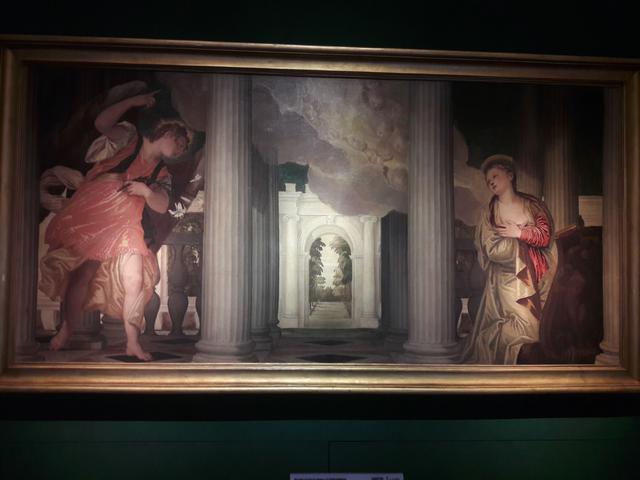The Annunciation

The Annunciation is an oil on canvas painting by Paolo Veronese, dating from 1570-1575.
The work was sold to Leopoldo de' Medici by Paolo del Sera, the cardinal's agent and intermediary in Venice: it was purchased in 1654, together with the martyrdom of Saint Giustina, and taken to Florence.
The attribution is not accepted univocally: Morelli was the first to reject it (using the name Giovanni Battista Zelotti), followed by Adolfo Venturi and Arslan, who had initially suggested a collaboration between the two artists. Fiocco and Pallucchini, on the other hand, referred it to Veronese, but if the former believed that it was an early work, the latter associated it with the Coronation of Saint Sebastian in 1555, a hypothesis that was later accepted by the majority of critics.
The scene takes place in Palladian architecture, with a flight of columns in the center towards the vanishing point of an arch framing a garden (the hortus conclusus). Particularly monumental is the contrast between the vertical elements of the architecture and the horizontal format of the painting, which create a particularly solemn and surprising scan, also thanks to the sensation of depth accentuated by the succession of planes of light and shadow. Ideally, the painting is divided into three parts, the first where the angel is, the second in architecture, and the third where Mary turns to read on her knees in a theatrical manner, crossing her arms towards her chest as a sign of humility. . The connection between the three parts is entrusted to a luminous cloud of cherubs, in the center of which the dove of the Holy Spirit descends.
The angel has his clothes puffed up from the flight he has just completed, capable of creating beautiful iridescent reflections in the fabric, and is posed in an asymmetrical pose, performed in depth, while raising his right finger to indicate the sky, while with his left arm holds the chest the white lily.
© Tourblink